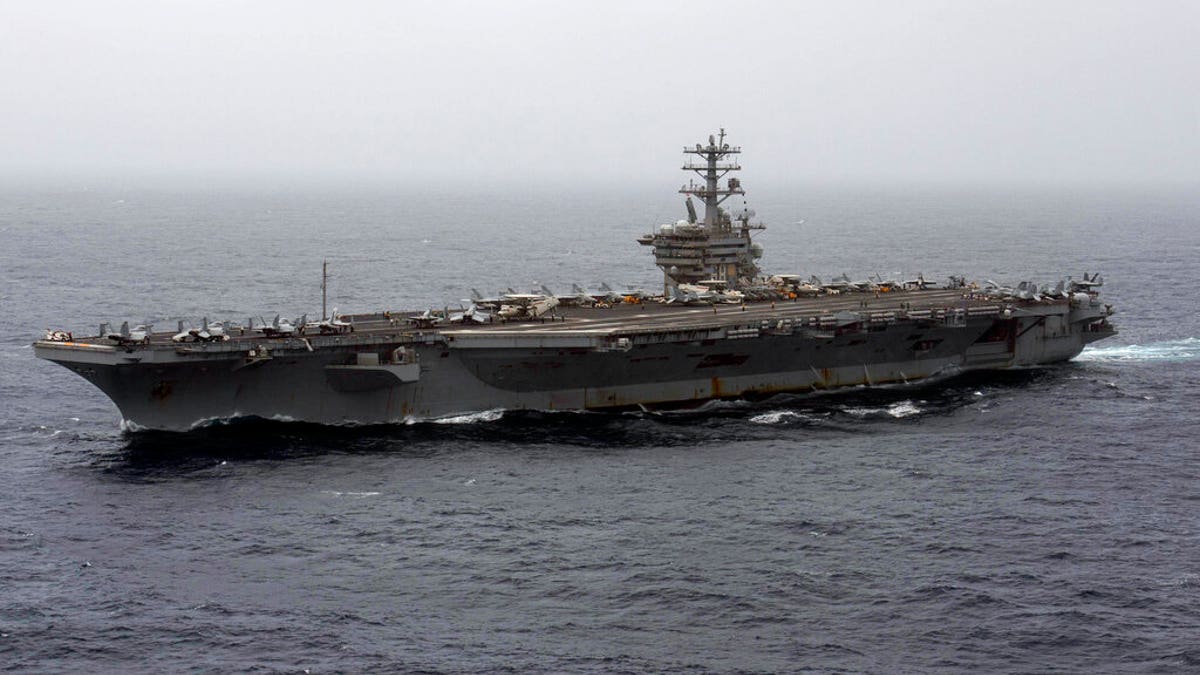Fox News Flash top headlines for January 4
Fox News Flash top headlines are here. Check out what's clicking on Foxnews.com.
The topic is discussed so often it might seem like old news, yet ongoing questions about the future of aircraft carriers are as, if not more, relevant today than at any other time. Are carriers obsolete? Are they too large and vulnerable to long-range precision carrier-killer missiles to operate close enough to shore to project power? Will the Navy architect a new generation of differently configured carriers? Perhaps smaller, faster and more agile?
To the extent that the Navy’s recently released 30-year shipbuilding plan offers a glimpse into current thinking about future Naval warfare, it is clear that the question will continue to receive very significant attention. The text of the plan states that, moving through the next five years and beyond, the Navy plans to analyze "carrier evolution," by writing that the service "continues to meet full funding requirements for CVN 80/81 and advanced procurement for a CVN in 2026. The department also recognizes the need for continued exploration of carrier evolution and expects to conduct an analysis of alternatives within the FYDP (Five Year Defense Spending Plan) to inform potential requirements."
CVN 80 and 81, the third and fourth Ford-class carriers, are already well underway following the successful construction of the first-in-class USS Ford which is now nearing deployment.
NAVY ACCELERATES NEW SHIP RADAR TO SUPPORT EMERGING 'SEA-ATTACK' STRATEGY

FILE - In this Sept. 7, 2020, file photo released by the U.S. Navy, the aircraft carrier USS Nimitz transits the Arabian Sea. The Pentagon announced Thursday, Dec. 31, 2020, that the USS Nimitz, the only Navy aircraft carrier operating in the Middle East, will return home to the U.S. West Coast. (Mass Communication Specialist 3rd Class Elliot Schaudt/U.S. Navy via AP)
The question regarding the future has been studied extensively in recent years through a number of formal Navy studies, and many weapons developers continue to ponder a range of potential contingencies. Some of these include greater use of F-35B armed amphibious assault ships for carrier-like power projection missions. Certainly, having 5th Gen attack capability extends the tactical and operational envelope for amphibs, and newer amphibs are being engineered with new abilities to command and control large fleets of surface, air and even undersea drones. Would amphibs be less vulnerable targets sufficiently capable of sustaining a high-op tempo sortie rate for maritime attack?
Other major factors include the large-scale incorporation of surface, air and undersea drones, meaning carriers could operate at safer standoff distances when enabled by new platforms such as the MQ-25 Stingray, a first-of-its-kind drone able to nearly double the strike range of carrier-launched fighter jets such as F-35s and F/A-18s. Then there is the question of evolving ship defenses, meaning newer kinds of layered defense weapons to include EW (electronic warfare), lasers, aerial sensor nodes, advanced radar and faster computer processing for fire control all continue to massively improve carriers’ ability to operate safely in high-threat environments such as waters within striking range of China’s heavily touted carrier-killer DF-26 and DF-21D anti-ship missiles. Fast-evolving ship defense technologies are likely one reason why senior Navy leaders continue to emphasize that U.S. carriers are going nowhere soon and can operate wherever they need to, whenever they need to when called upon. While the mission to project massive attack power from the sea is by any estimation here to stay, its particular size, shape and technological configuration certainly may evolve.
CLICK HERE TO GET THE FOX NEWS APP
Drone evolution may be the hidden key to all of this in several respects. Certainly the Navy’s MQ-25 will not be the only carrier-launched drone to emerge, as others will likely follow, and how about the idea of large unmanned carrier-like platforms launching unmanned strike assets? All while command and control operations are performed by human sailors at safer standoff ranges? That would certainly change the equation when it comes to operating in high-risk areas more vulnerable to enemy fire. As part of this equation, it would seem important to point out that the Navy is already well on the way to engineering new large unmanned ships such as the Medium and Large Unmanned Surface Vessel programs. Large drone boats could perform anti-submarine warfare, conduct reconnaissance operations and even coordinate strikes for aircraft from strategically vital vantage points enabling maritime forces to project power from wherever needed.
-- Kris Osborn is the Managing Editor of Warrior Maven and The Defense Editor of The National Interest --
Kris Osborn is the defense editor for the National Interest*.* Osborn previously served at the Pentagon as a Highly Qualified Expert with the Office of the Assistant Secretary of the Army—Acquisition, Logistics & Technology. Osborn has also worked as an anchor and on-air military specialist at national TV networks. He has appeared as a guest military expert on Fox News, MSNBC, The Military Channel, and The History Channel. He also has a Masters Degree in Comparative Literature from Columbia University.





















